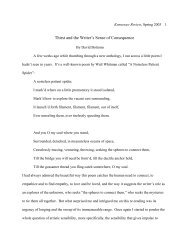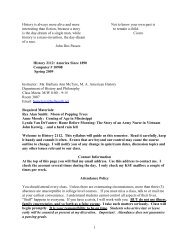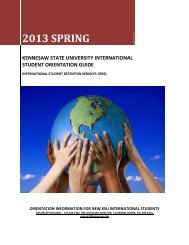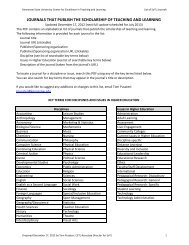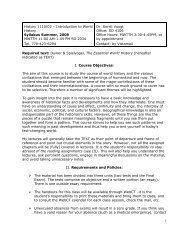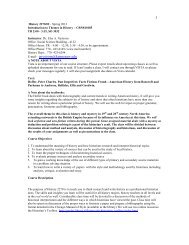Food, Gender and Cultural Hegemony - Kennesaw State University
Food, Gender and Cultural Hegemony - Kennesaw State University
Food, Gender and Cultural Hegemony - Kennesaw State University
You also want an ePaper? Increase the reach of your titles
YUMPU automatically turns print PDFs into web optimized ePapers that Google loves.
Cualli 137<br />
showed awareness of the danger of alcoholic intoxication (Sahagun; Soustelle 156-<br />
157). "That drink which is called octli," said the emperor to his people, "is the root<br />
<strong>and</strong> the origin of all evil <strong>and</strong> of all perdition; for octli <strong>and</strong> drunkenness are the<br />
cause of all the discords <strong>and</strong> of all the dissensions, of all revolt <strong>and</strong> of all troubles<br />
in cities <strong>and</strong> in realms." There were terrible punishments for public drunkenness,<br />
even by death. But pulque was not entirely prohibited: old men <strong>and</strong> women were<br />
allowed to drink, particularly on certain holidays (Soustelle 156-157). And pulque<br />
seems to have been used as a ceremonial means of sealing contracts such as the<br />
sale of l<strong>and</strong> (Lockhart 168-169).<br />
Chocolate was also a beverage of great symbolic <strong>and</strong> religious significance.<br />
Special pots, cups <strong>and</strong> spoons were made especially for chocolate <strong>and</strong> there was a<br />
particular etiquette in its consumption. It was flavored in various ways, most<br />
notably with chiles. It seems to have been developed as a food by the Olmecs, <strong>and</strong><br />
was passed to the Nahua by the Mayas (Coe <strong>and</strong> Coe 35-66). It was imported to<br />
Central Mexico from the Yucatan <strong>and</strong> Guatemala. Chocolate was symbolically<br />
associated with blood, <strong>and</strong> was restricted to those of high prestige <strong>and</strong> warriors.<br />
Those not involved in battle were not permitted chocolate. 1 Duran reports that<br />
ground cacao was made into wafers <strong>and</strong> issued to every soldier on a campaign,<br />
along with toasted maize, maize ground into flour, toasted tortillas, ground beans,<br />
<strong>and</strong> bunches of dried chillis (Duran 358). Initially the Europeans were not at all<br />
attracted to this black drink.<br />
Although the early Mexicans left no cookbooks, the Spanish priest<br />
Bernardino de Sahagun compiled a vast list of foods along with their appropriate<br />
condiments. The Nahua prepared turkey with several different sauces, including<br />
yellow, green, <strong>and</strong> red chiles. Yellow chiles <strong>and</strong> tomatoes were used to flavor<br />
white fish <strong>and</strong> fowl. Another red chile formed the proper sauce for shrimp, <strong>and</strong><br />
green chiles provided the natural spice for frogs (Sahagun 8:37-40).<br />
Theoretical Framework: Cuisine as Language<br />
<strong>Food</strong> <strong>and</strong> related practices include the accepted meals eaten during the day,<br />
the ingredients of each meal, how they are combined, the order in which they are<br />
[Type text]



